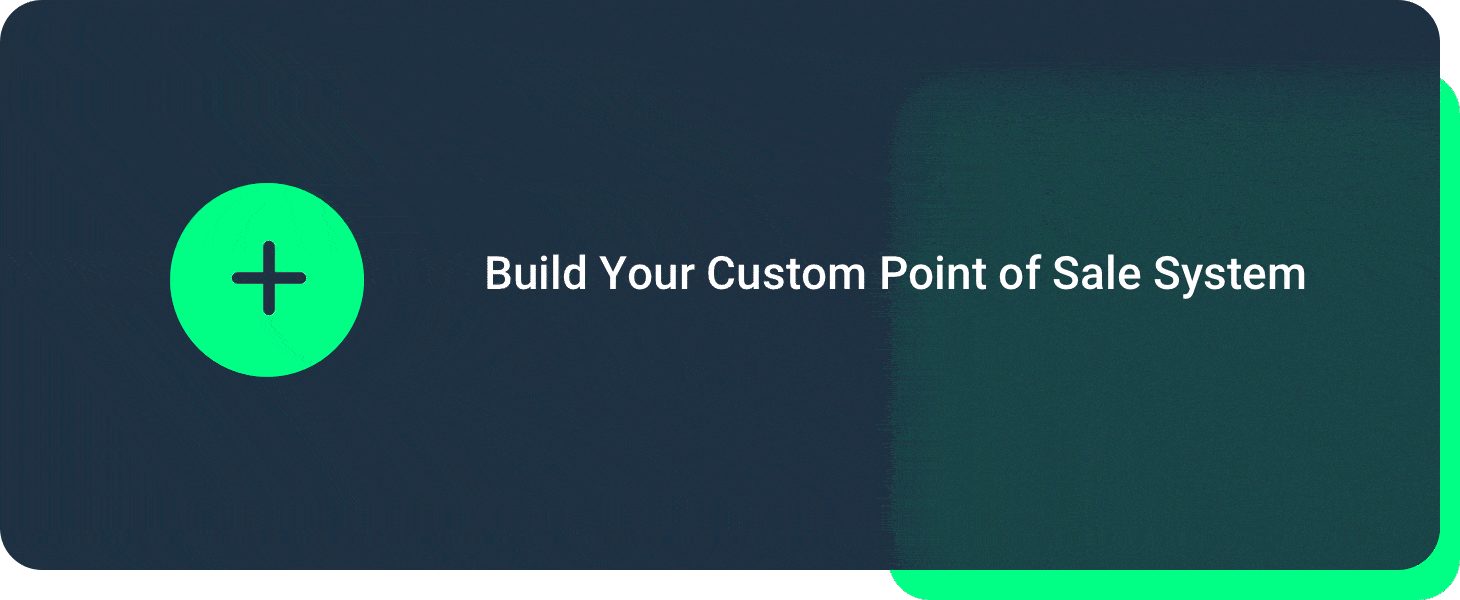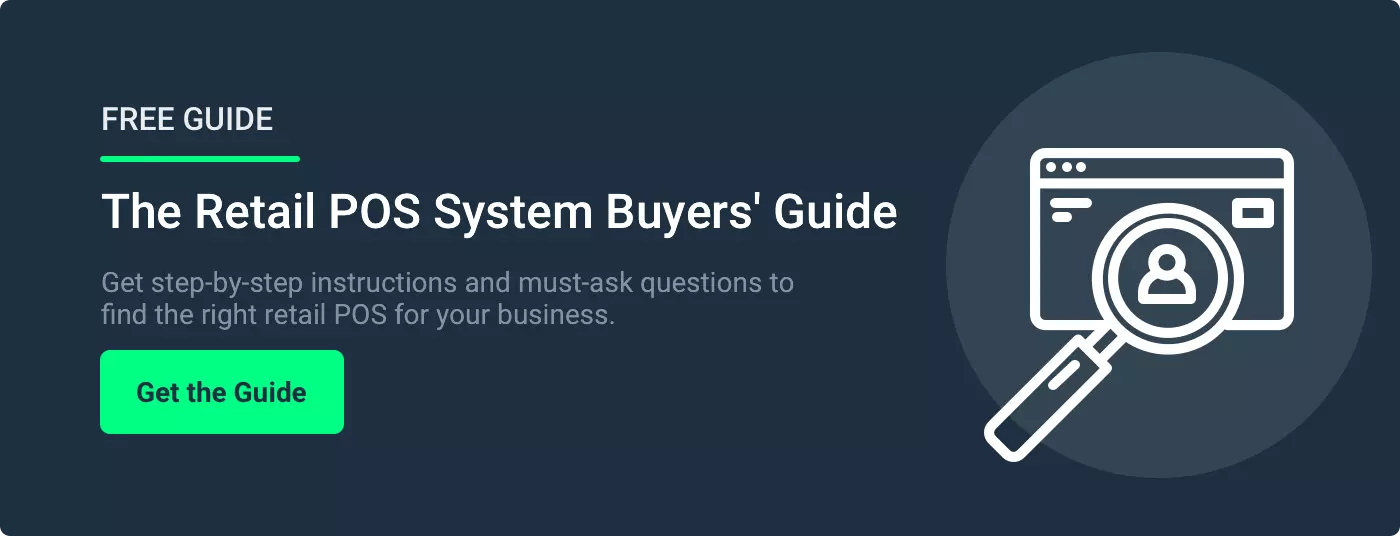Managing a retail store is like juggling a dozen balls at once.
You've got to keep your eye on inventory, sales, customer relationships, and more — all while trying to turn a profit. Drop just one ball, and the entire performance can go off-balance.
But with the right tools, techniques, and some helpful tips, you can do it all! No more running out of top-selling products, dealing with unhappy customers, and managing employees under pressure. It’s time to level up your store.
In this article, we're going to dive deep into the top nine tools, techniques, and tips that can make your retail store run like a well-oiled machine.
Retail Management Solutions: Tools, Techniques, and Tips
Managing a retail store doesn’t have to feel overwhelming or stressful when done right.
A mixture of the right tools and techniques keeps your store running smoothly and profitably. You can run a thriving store with your finger on the pulse of inventory levels, forecasts to help meet sales goals, and the ability to provide stellar customer service.
However, you'll quickly lose control if you fall behind in your retail management responsibilities.
Related: How To Increase Inventory Turnover: 6 Ways To Optimize Your Inventory
Not knowing your numbers leads to stockouts, bloated inventory, and missed sales targets. Neglecting customer needs and preferences will quickly see them turn to your competitors. Your employees will feel like they’re constantly chasing their tails.
The proven tools, techniques, and tips we’ll discuss next will help you master retail management. When leveraged properly, they can turn a struggling retail operation into a revenue-making machine.
Retail Management Solutions: The Top Tools
Let’s start with a POS system. Far from just processing transactions, a POS system can be your business hub. It rings up sales, accepts payments, tracks customer data, and generates reports based on sales trends and employee performance. Look for a provider with a robust feature set and great support.
You’ll also want to think about inventory management. Many POS systems integrate inventory management software, and for good reason.
Tight inventory management ensures you have just the right amount of products on hand. Shortages lead to lost sales and unhappy customers, while too much stock results in tied-up cash. With an inventory management system and real-time visibility, you can take control of purchase orders, transfers, inventory counts, and reporting.
Customer relationship management (CRM) software helps you nurture lasting customer relationships. They can log transactions and provide insights into purchasing trends and marketing effectiveness. You can then deliver personalized experiences to drive loyalty and repeat business.
Top POS Systems for Retail Stores
Not all POS systems are built the same. It’s important to look at a few different options and make the best decision for your unique needs.
POS Nation: We provide a full-featured POS solution designed specifically for retailers. Key features include sales and inventory tracking, robust reporting, customized hotkeys, and pain-free employee management. We have flexible hardware options and excellent, 24/7 support.
Find out how much you can save on our POS system with our build and price tool.
Comcash: An easy-to-use, web-based POS platform for small retailers, Comcash has essential features like inventory control, customer displays and management, loyalty programs, online ordering, and multi-location support. Working with retailers worldwide for over 25 years, Comcash knows what it takes to run a successful retail store and provides the tools you need to grow.
Lightspeed POS: Lightspeed is a POS solution designed to help retailers simplify complex inventory and accounting tasks, while creating exceptional customer experiences. Its intuitive dashboard allows real-time visibility into sales and inventory metrics, and the customizable receipt printer is a popular feature. This enterprise-grade POS system works well for expanding retailers with complex needs.
You'll have an intricate view of your store with a POS system, integrated inventory management, and CRM capabilities.
The Art and Science of Retail Management
Tools are one thing; learning to wield those tools is another. Let’s now turn our attention to some of the techniques you can use to get the most from your retail management tools.
Utilize Sales Forecasting
Both an art and a science, sales forecasting helps predict future demand.
Accurate forecasting ensures you never run out of products your customers love, and reduces write-offs from overstocking. Historical sales data gives you a baseline, but to master sales forecasts, you need to factor in external elements and intuitive insights.
Start by analyzing past sales reports using your POS system. Then consider external factors that might influence future sales, such as seasonality, planned promotions and advertisements, what your competitors are doing, and current economic conditions.
Your experience and gut instincts about emerging trends or products can fine-tune your forecasts. Your store is unique — maybe that super-hot product in other stores doesn’t excite your customers. Sales forecasts are a living thing. You can leverage POS reports to determine when forecasts are on target or when they need adjustments.
Streamline Supply Chain Management
Efficient supply chain management ensures inventory aligns with sales demand; in other words, you can optimize inventory levels so that you have enough inventory on hand without excess stockpiling.
Building and maintaining strong relationships with key suppliers is essential. Regular communication helps forecast demand, negotiate pricing, and handle issues promptly. Long-term partnerships are key!
Related: The 5 Top Vendor Management Best Practices
You can use your POS system to improve supply chain visibility. You can track and automate purchase orders, get delivery updates and update inventory counts in real time, and set reorder points with alerts when stock is running low.
To improve supply chain management, analyze sales data, and identify your fast versus slow-moving items. With these insights, fine tune order quantities and delivery frequencies. Being transparent with vendors is vital here. Work with them to determine ideal order sizes, negotiate shipping rates, identify peak seasons, and streamline receiving processes.
Deliver Stellar Customer Experiences
Providing excellent customer service is key to building loyalty, generating repeat business, and growing your retail store. Every retailer wants repeat customers who love shopping with them, but you need more than just good inventory management to create loyal customers.
Start with your store layout and environment. Is your store welcoming? Does it flow well? Are customers directed around your store in an intuitive way? You want to provide an experience. Create visually appealing displays that make shopping easy, and explore ways to speed up the checkout process.
Your employees are the face of your store and brand. Train them on customer service skills, store policies, and product knowledge. Give them the tools to serve customers well, and set expectations.
You can use your POS system and CRM integration to track purchase history, preferences, and previous interactions. This customer data is invaluable for personalizing communications and promotions. Implement loyalty programs to thank repeat shoppers; try creative rewards like point systems and VIP tiers.
Pro Tips for Effective Retail Management
Rounding out our mini retail management playbook are a few pro tips.
Implement Omnichannel Retailing
With more people shopping online, but brick-and-mortar stores still popular, you can give customers the best of both worlds. Create a seamless shopping experience with these tips:
- Make it easy for customers to buy products online and pick them up in your store. It gives shoppers more options, while driving foot traffic. To track orders and inventory, integrate your e-commerce platform with your POS system.
- Integrate pricing, promotions, and inventory data across all sales channels. Whether customers engage online, in-store, or via mobile, they expect consistent information. Connect your POS to other systems and centralize this data.
- Fill orders efficiently using store or warehouse inventory. Leverage your retail footprint by shipping to customers or having in-store pickups. Integrating POS, e-commerce, and inventory management systems makes this possible.
- Ensure consistent branding, communications, and promotions across all channels. Sync your marketing campaigns and loyalty programs across digital and to your other systems.
Leverage Data Analytics
Your POS system is a goldmine of data. Use these business insights to manage your store.
- Integrate your POS, inventory, CRM, and other systems, so you can analyze data from a single source.
- Analyze your data to identify key trends. You can analyze sales by product, brand, season, promotion, customer segment, and purchase frequency. The insights are endless!
- Create sales dashboards and reports tailored to your business. Monitor KPIs like revenue, conversion rate, average transaction size, inventory turns, and customer retention.
- Identify opportunities to improve based on data. Examples: Adjust staff schedules based on your busiest days or times, reorder top-selling products automatically, create promotions to re-engage lost customers, and optimize future product assortment based on sales trends.
- Keep analyzing and refining your retail strategy. Reports on sales, customer analytics, and inventory metrics give you a full picture.
Invest In Your Staff
Your employees are the face of your store. Keeping them happy and productive is key.
- Recruit people who match your brand's personality and are growth-oriented. Along with qualifications, look for a good attitude, work ethic, and people skills.
- Provide thorough onboarding and training on store systems, policies, products, and customer service. To learn best practices, have them shadow top employees.
- Train your team on new products, features, and services, and offer coaching on areas for improvement. Training is an investment that boosts performance.
- Encourage great work through contests, bonuses, and rewards programs. Recognize top performers in front of the team. Provide staff with the tools they need to delight customers.
- Get input from employees and show you value their feedback. Openly discuss challenges and suggestions.
- Provide growth opportunities through cross-training, leadership development, pay increases, and promotions. Growing talent improves retention.
Retail Management Solutions: Take Your Store to the Next Level
Great retail management requires adapting, utilizing retail management solutions at your disposal, and embracing new trends. The tools, techniques, and tips here are suggestions — you’ll know what’s right for your store. Pick what works best for your business needs, employees, and management style.
Your POS system, however, should be the central hub of your operations. This powerful tool provides the visibility, data, and integrations you need to optimize various aspects of running your store.
POS Nation works with over 10,000 retailers to provide a customized and affordable POS system. You can manage inventory smoothly, use reports to make better decisions, and delight customers with integrated loyalty programs.
To see how, schedule a demo with one of our retail experts today. Or get your free copy of our Buyers’ Guide to purchasing a retail POS system.







 by Brian Sullivan
by Brian Sullivan


 by Graham Hoffman
by Graham Hoffman